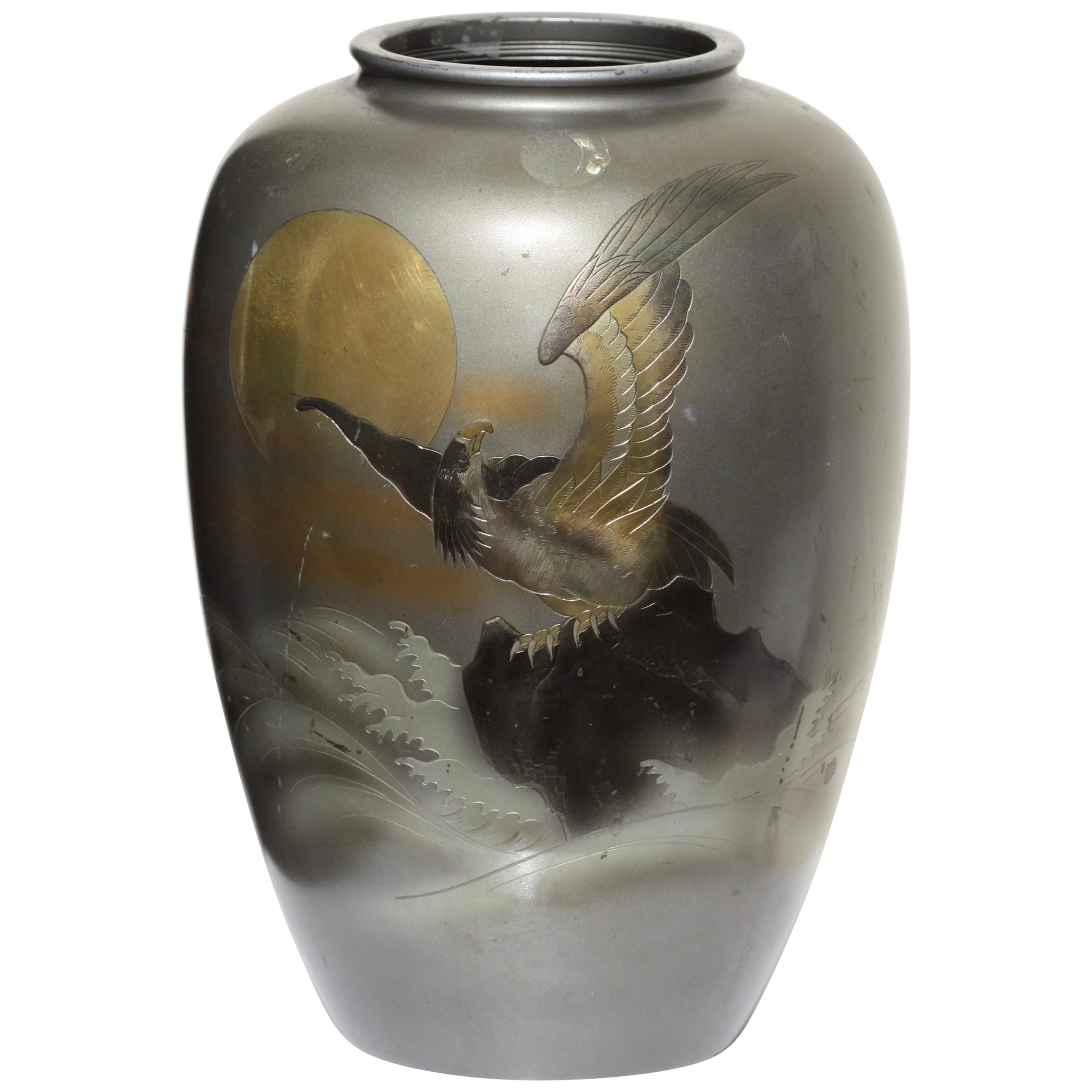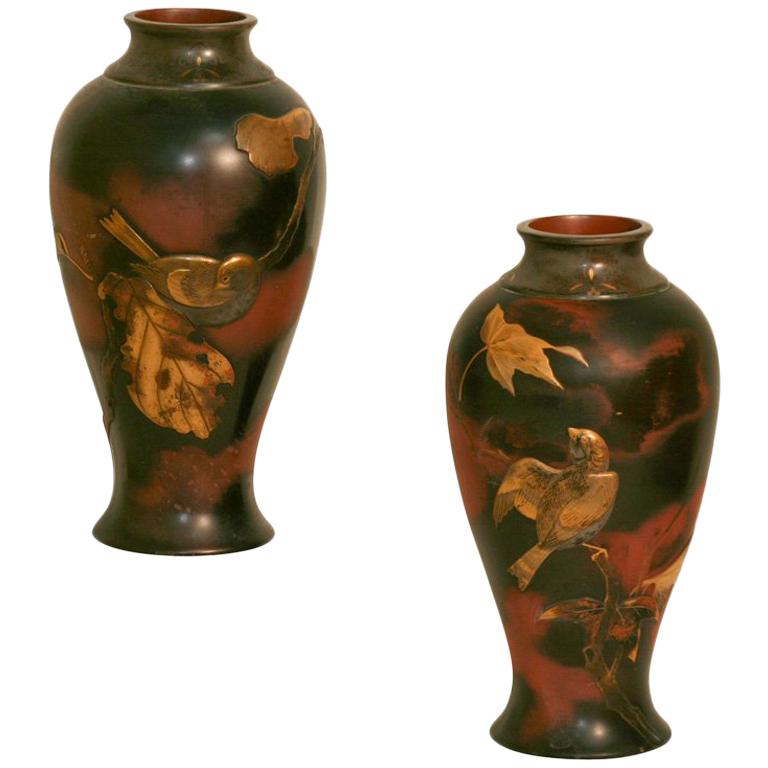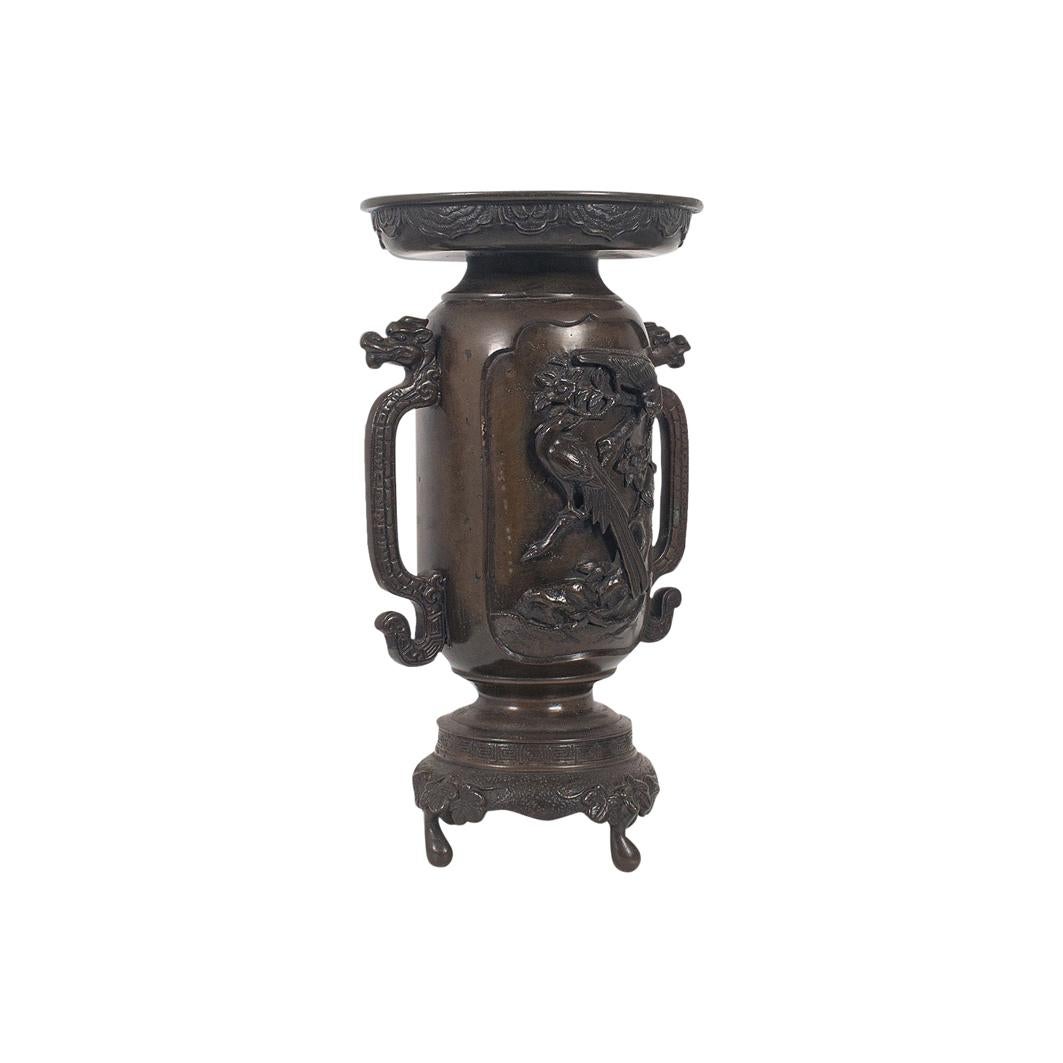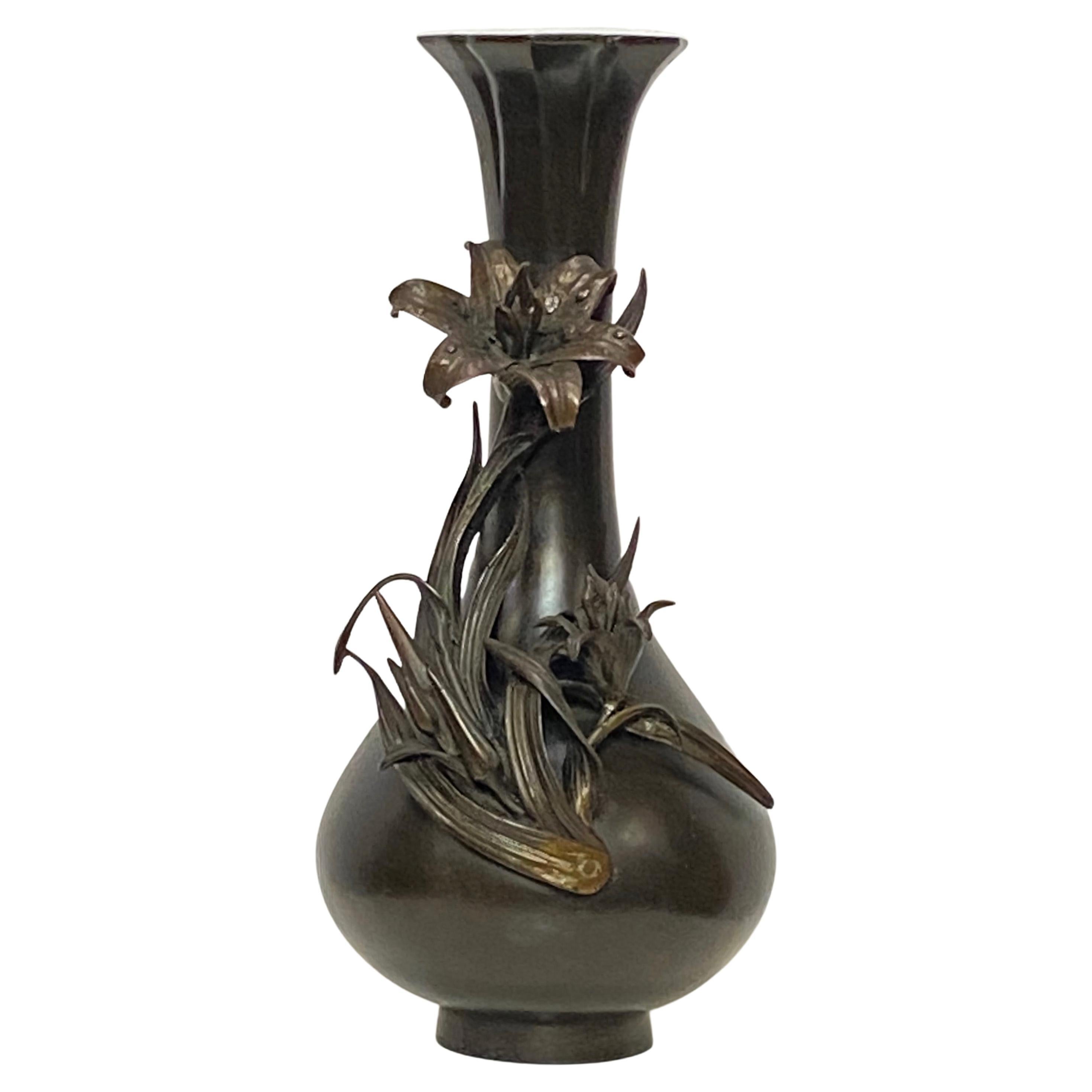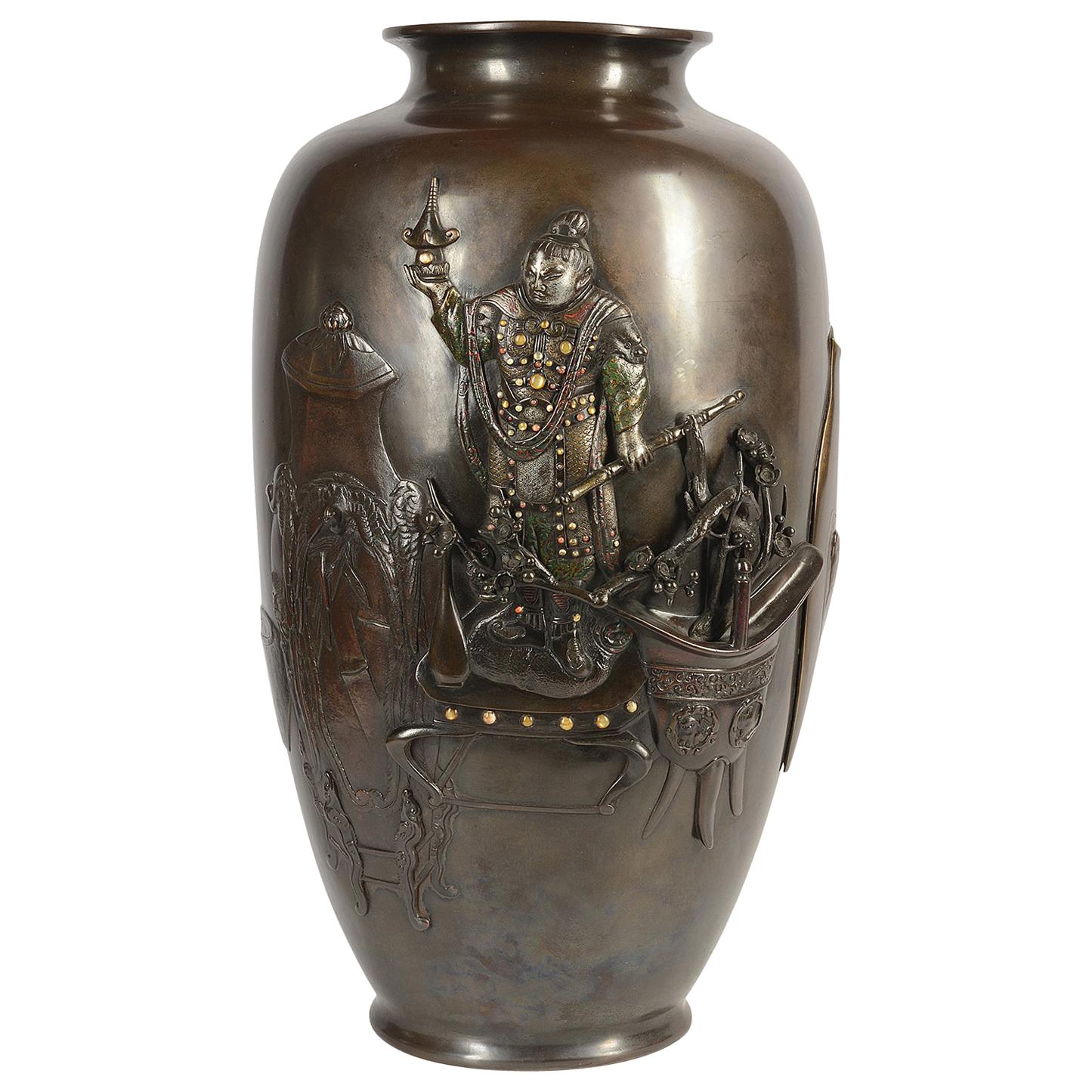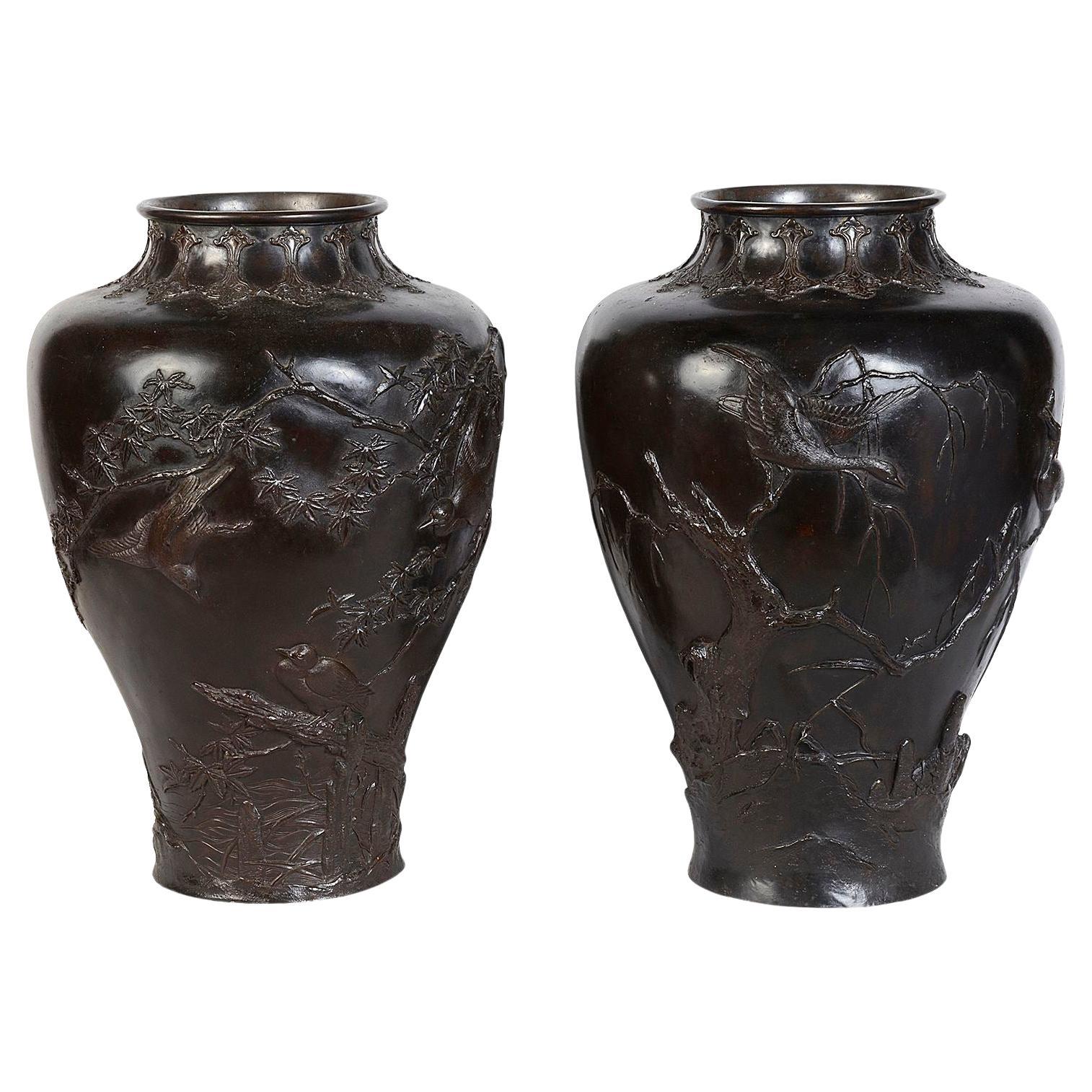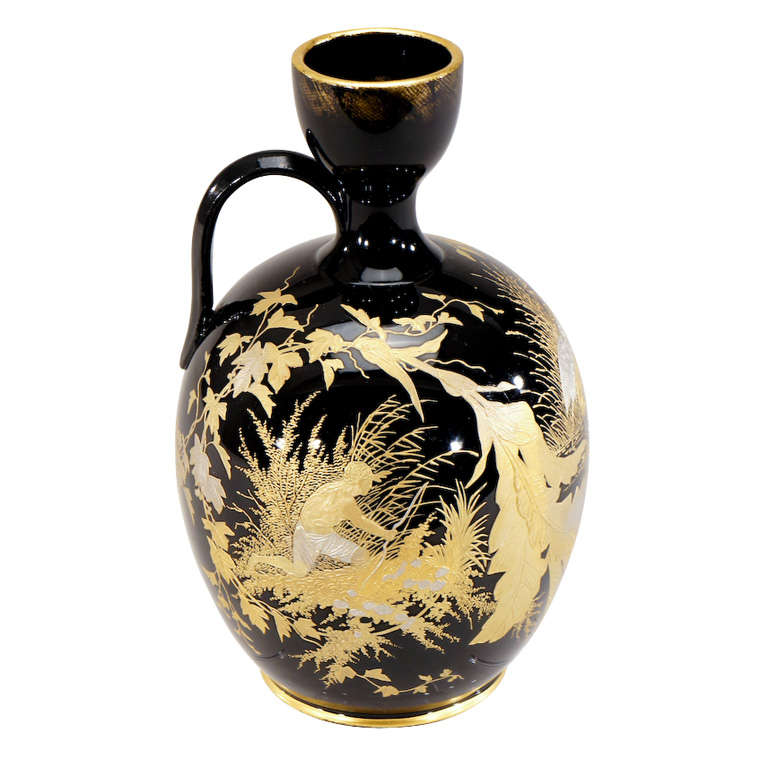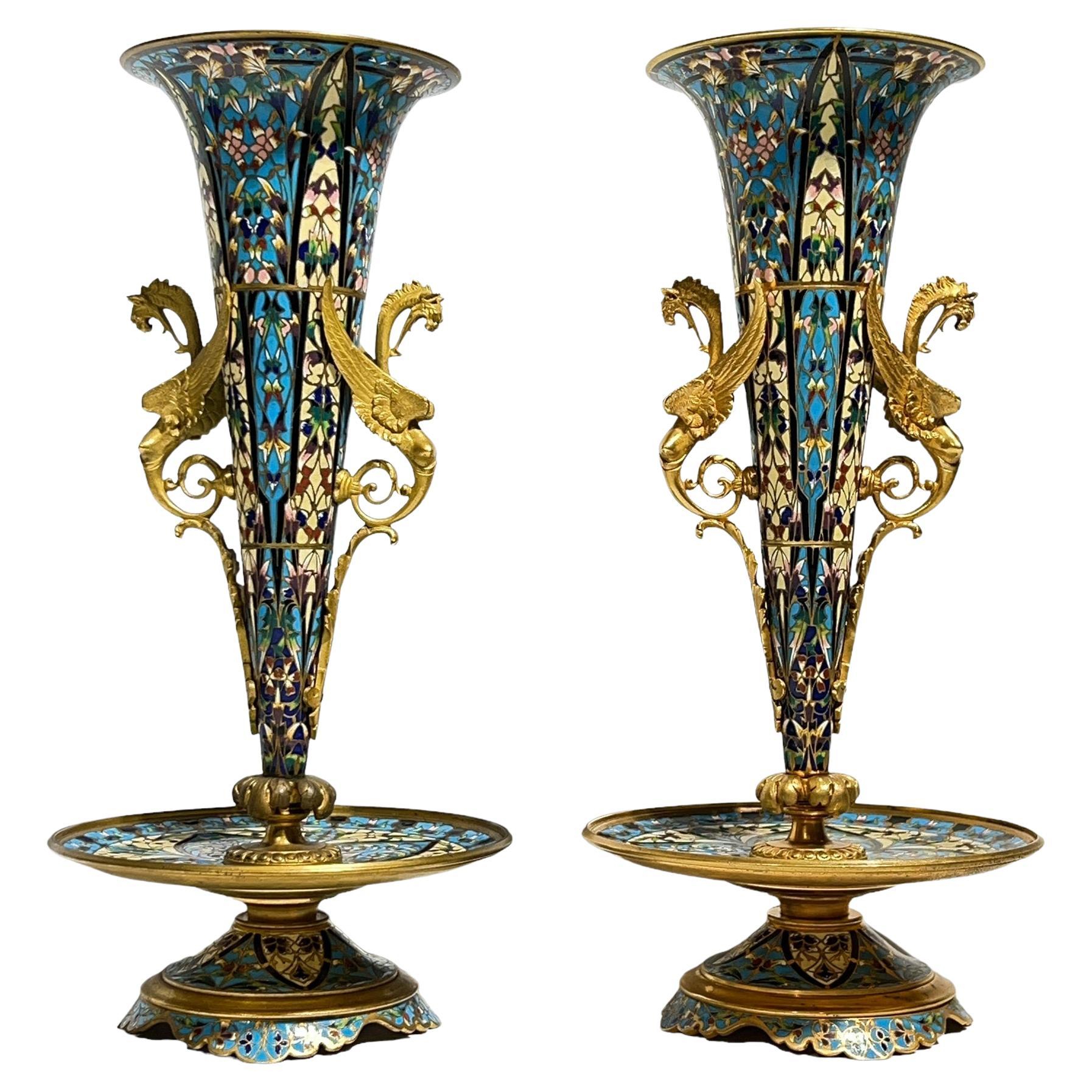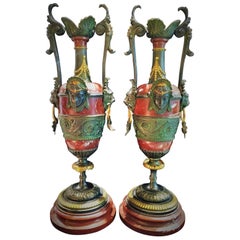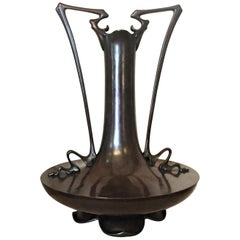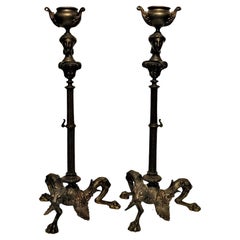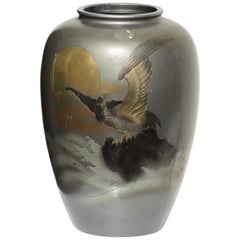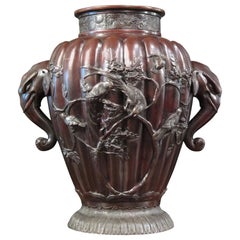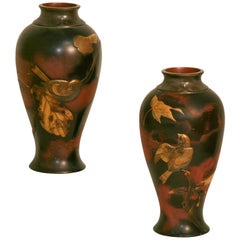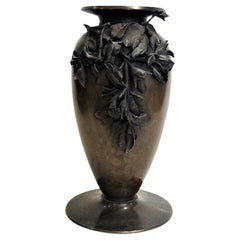
Italian Aesthetic Period Bronze Vase, Late 19th Century
View Similar Items
Want more images or videos?
Request additional images or videos from the seller
1 of 9
Italian Aesthetic Period Bronze Vase, Late 19th Century
About the Item
- Dimensions:Height: 9.75 in (24.77 cm)Width: 7.25 in (18.42 cm)Depth: 2.5 in (6.35 cm)
- Style:Aesthetic Movement (Of the Period)
- Materials and Techniques:Bronze,Cast
- Place of Origin:
- Period:
- Date of Manufacture:ca. 1890
- Condition:Wear consistent with age and use. We make our best effort to provide a fair and descriptive condition report. Please examine photos attentively, as they are an integral part of the description. Send us a message to request more details or discuss price.
- Seller Location:New York, NY
- Reference Number:1stDibs: LU2819331161532
About the Seller
5.0
Vetted Seller
These experienced sellers undergo a comprehensive evaluation by our team of in-house experts.
Established in 1993
1stDibs seller since 2017
68 sales on 1stDibs
Typical response time: 3 hours
More From This SellerView All
- Napoleon III Marble and Bronze Garniture, France, 19th CenturyLocated in New York, NYA garniture is a decoration for the top of a fireplace mantel. Presented here is a good example of richly patinated and gilded bronze and red marble in the style of Napoleon III, who...Category
Antique 1860s French Napoleon III Urns
MaterialsMarble, Bronze
- Japanese Art Nouveau Meiji Period Patinated Bronze Vase, circa 1900Located in New York, NYAlthough unmarked, this rare and important, grand but at the same exquisite patinated bronze vase has just a very few little details, defying the shape of the handles, as well as the...Category
Antique Early 1900s Japanese Art Nouveau Vases
MaterialsBronze
- A Pair of Bronze Neoclassical Grand Tour Candelabras, Late 19th CenturyLocated in New York, NYGrand Tour Pair of Bronze Candelabras Late 19th Century DIMENSIONS Height: 10.33 inches Width: 4.75 inches Depth: 4.75 inches ABOUT We present to your attention a pair of stunning...Category
Antique 1890s English Grand Tour Candelabras
MaterialsBronze
- Japanese Kyoto Fuzan Satsuma Ware Double-Handled Vase, Meiji Period, ca. 1900Located in New York, NYThis beautiful end of Meiji Period Japanese Kyoto Fuzan Satsuma Ware double-handled vase has a gold plated intricate infinite circular relief pattern design and two images of goddess...Category
Antique Early 1900s Japanese Taisho Vases
MaterialsPorcelain
- French Art Nouveau Patinated Bronze Sculptural Iris Vase, ca. 1900Located in New York, NYABOUT IRIS The iris is a special and mysterious flower. Not only because of its striking appearance, but also from an artistic and historical point of view. It is also like a work of art, as though created by Mother Nature. The unique leaves of this plant not only create wonderful shadow casts, but also look as if they were painted by hand. It's no wonder that iris acts as the muse for countless artists, and can be seen in many famous works of art. The iris was first spotted in the time of Pharaoh Thutmose, in 1504 BC. He had the iris inscribed into the wall reliefs of a temple as a sign of his power, as well as decorating his sceptre with motifs of the flower. Since then, the iris has been a symbol of victory in Egypt. But the symbolism of the iris goes further than that. In Japan, the flower represents courage and is the symbol of the boys' festival. In Islamic cultures, the iris is a symbol of prosperity. In Europe, the flower was a popular weapon symbol in the Middle Ages and stood for chivalry. And in Christianity, the iris was seen as a symbol of the trinity because of its three-part flowers. With more than 300 varieties, the iris is now the most popular flower among growers and gardeners following the rose. Countless artists use the iris in their works and the flower is present in all eras. You can see the flower on furniture, vases, jewelry, fabrics, sculptures, coats of arms and much more. Did you know that the iris is also called the sword lily? It's not a coincidence that it used to symbolize physical and emotional pain and suffering caused by a weapon. We also see the flower in religious art, where it's often associated with Mary and Jesus. The iris is also associated with the Greek goddess Iris, where the flower symbolizes reconciliation and divine messages. This is also reflected in many paintings. Finally, the iris is also visible in Dutch and Flemish still-life paintings. This can be in a religious form, incorporated into an object or as a decorative flower. In the Art Nouveau art movement, the iris (along with other plants, such as the birch) was often used as an expression of feminine beauty. With its almost otherworldly appearance, the iris is perfectly suited to the Art Nouveau aesthetic and is featured in many well-known works of art. The poet of that era, Hermann Hesse...Category
Antique Early 1900s French Art Nouveau Planters, Cachepots and Jardinières
MaterialsBronze
- Alfonso Canciani, Viennese Secession Orientalist Bronze Vase, c. 1910By Alfonso CancianiLocated in New York, NYAlfonso Canciani (Italian-Austrian, 1863-1955) was a famous Italian-Austrian sculptor of the period of accession to the Viennese Secession. Son of a stonemason, after a realist period he managed to establish himself as a leading sculptor of the Viennese Secession. In fact, he worked in Vienna, where he had enrolled in 1886 at the Academy of Fine Arts, then at the Higher School of Sculpture and finally at the Special School, where he obtained the Rome prize for the sketch for Dante's Monument. He developed a notable business obtaining important prizes and numerous commissions. First among the sculptors of the Viennese capital, he was invited to join the Association of the Viennese Secession, of which Klimt was magna pars, after the exhibition of Dante's group in 1900 at the Secession exhibition, and obtained the most important Austrian artistic prize, the Kunstlerlpreis. This same work, presented in 1910 in Berlin, at the Great Art Exhibition, also received an important recognition here. He obtained the Rome prize in 1896, exhibited successfully in Munich and in 1899 at the III International Art Exhibition in Venice. In that period he made some statues of saints for the cathedral of Santo Stefano in Vienna, the monument to Wagner, the bust of Nietzsche for the University, the scepter and the gold chain of the University Rector, figures of Italian poets ( Petrarch, Boccaccio, Tasso, Ariosto). He submitted a sketch for the official monument to Empress Elizabeth, which was then built in Austrisn Gföhl and Pula. At the time of his accession to the Secession, he dedicated himself to decorating the facade of the Artaria house in Vienna in collaboration with the architect Max Fabiani. He later abandoned the symbolist decorativism of the Jugendstil for a more concentrated and vigorous style, approaching the Belgian sculptor Constantin Meunier for the theme of work, and preferring to exhibit at the Künstlerhaus. In Vienna, he was generous with advice and help with the Italians and in particular with his fellow citizens (such as the Brazzanese Luigi Visintin, then a university student). After the First World War, he returned to Italy and lived in Friuli, penalized by the fact that the Habsburg Empire had by now disappeared. Instead of large-scale public monuments, he then devoted himself to engraving medals (e.g. for Benedict XV and for the Italian mission in Vienna in 1919) and to designing funeral monuments (examples in Mali Lošinj and Trieste) and portrait busts (of Generals Carlo Caneva and Antonio Baldissera in Udine, sculptures of the War Memorial of Corno di Rosazzo). After all, he had already executed the Bab grave monument in the Döblinger cemetery in Vienna in 1909. He taught in Trieste from 1920 until 1935, at the local school of industrial art, where he had Marcello Mascherini...Category
Vintage 1910s Austrian Jugendstil Vases
MaterialsBronze
You May Also Like
- Fine Japanese Bronze Vase, Meiji Period '1868-1912', Late 19th CenturyLocated in West Palm Beach, FLFine Japanese bronze vase, Meiji Period (1868-1912) late 19th century A gilt and silvered hawk on a grey ground; signed with various incised characters on base. Measures: Height ...Category
Antique 19th Century Vases
MaterialsBronze
- Massive Japanese Meiji Period Bronze Vase, Late 19th Century, JapanLocated in Austin, TXA very large Meiji period bronze vase, possibly for temple use, with high relief design and elephant head handles, late 19th century, Japan. Of baluster form and unusual size, yet ...Category
Antique Late 19th Century Japanese Meiji Vases
MaterialsBronze
- Pair of 19th Century Japanese Aesthetic Movement Mixed Metal Bronze VasesLocated in Great Barrington, MAThis beautifully paired set of Aesthetic Movement Japanese bronze vases are decorated all around the body featuring birds and foliage. The ...Category
Antique 19th Century Japanese Aesthetic Movement Metalwork
MaterialsBronze
- Decorative Vase, Japanese, Bronze, Meiji Period, Late 19th Century, circa 1900Located in Hele, Devon, GBThis is an antique decorative twin-handled vase. A Japanese, bronze Meiji period vase, dating to the late 19th century, circa 1900. An impressive vase with striking detail Displa...Category
Antique Late 19th Century Japanese Vases
MaterialsBronze
- Large 19th Century Japanese Meiji Period Bronze VaseLocated in San Francisco, CAA large and elegant Meiji period bronze vase with floral decoration and original patina, unsigned. Japan, last quarter of the 19th century.Category
Antique Late 19th Century Japanese Meiji Metalwork
MaterialsBronze
- Large 19th Century Japanese Meiji Period Bronze VaseLocated in Brighton, SussexA large fine quality late 19th century (Meiji period 1868-1912) Japanese bronze vase. Having wonderful raised jeweled decoration depicting a merchant showing his wares. Measures: 58 ...Category
Antique Late 19th Century Japanese Vases
MaterialsBronze
Recently Viewed
View AllMore Ways To Browse
Enamel Work
Bedroom Sets With Glass
Classic Bathroom
Glass Vessel Pair
Decorative Gold Band
Murano Vase 1980
Ceramic Vase Centerpiece
Gold Lined China
Red Ground Vases
Murano Red And Blue Vase
Contemporary British Large Vase
Gold And Cobalt Vase
Fine Decorative Clay Vessels
Airedelsur Design
Vase With Deer
Meiji Blue And White Vase
Favrile Art Glass
End Of The Day Vase
